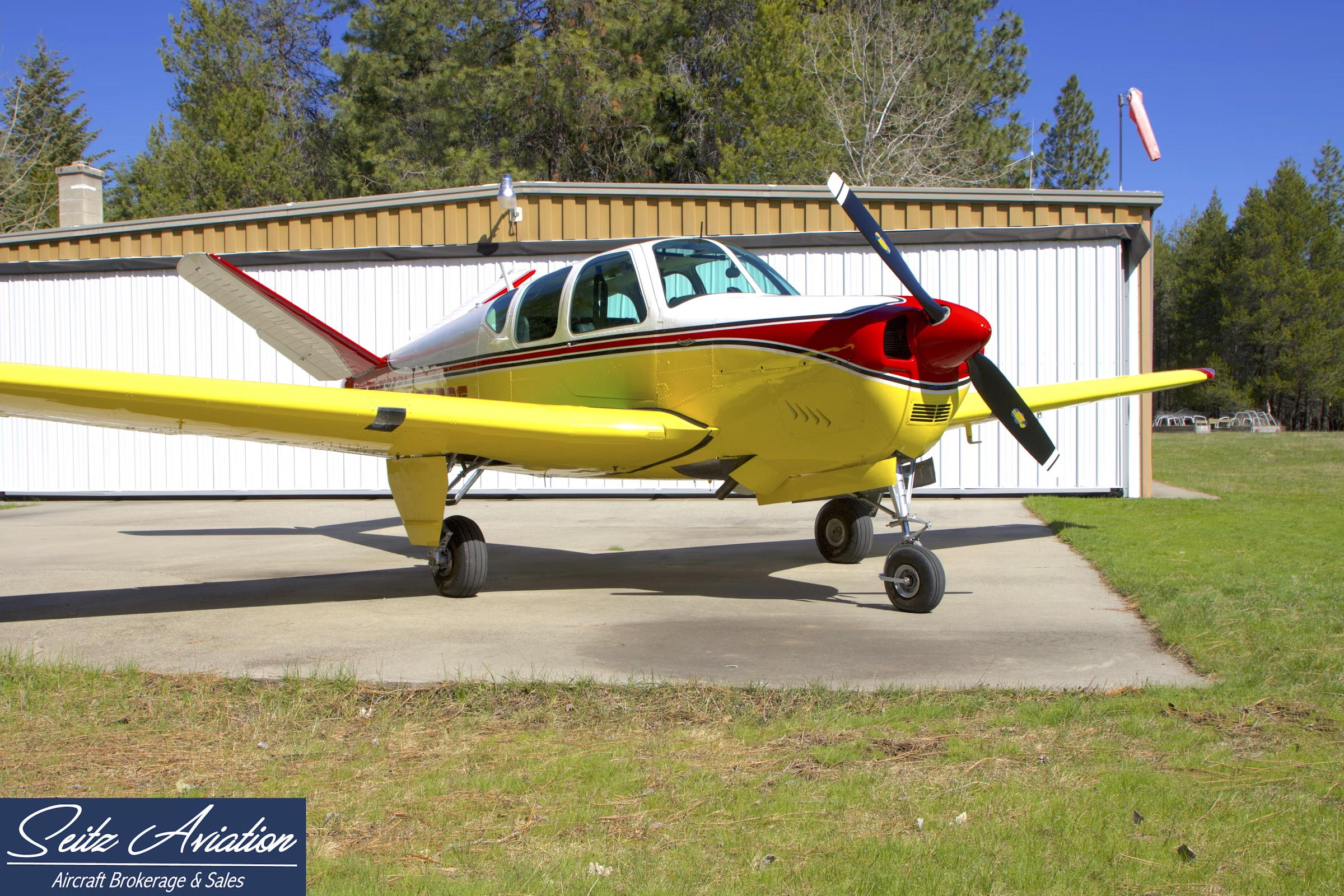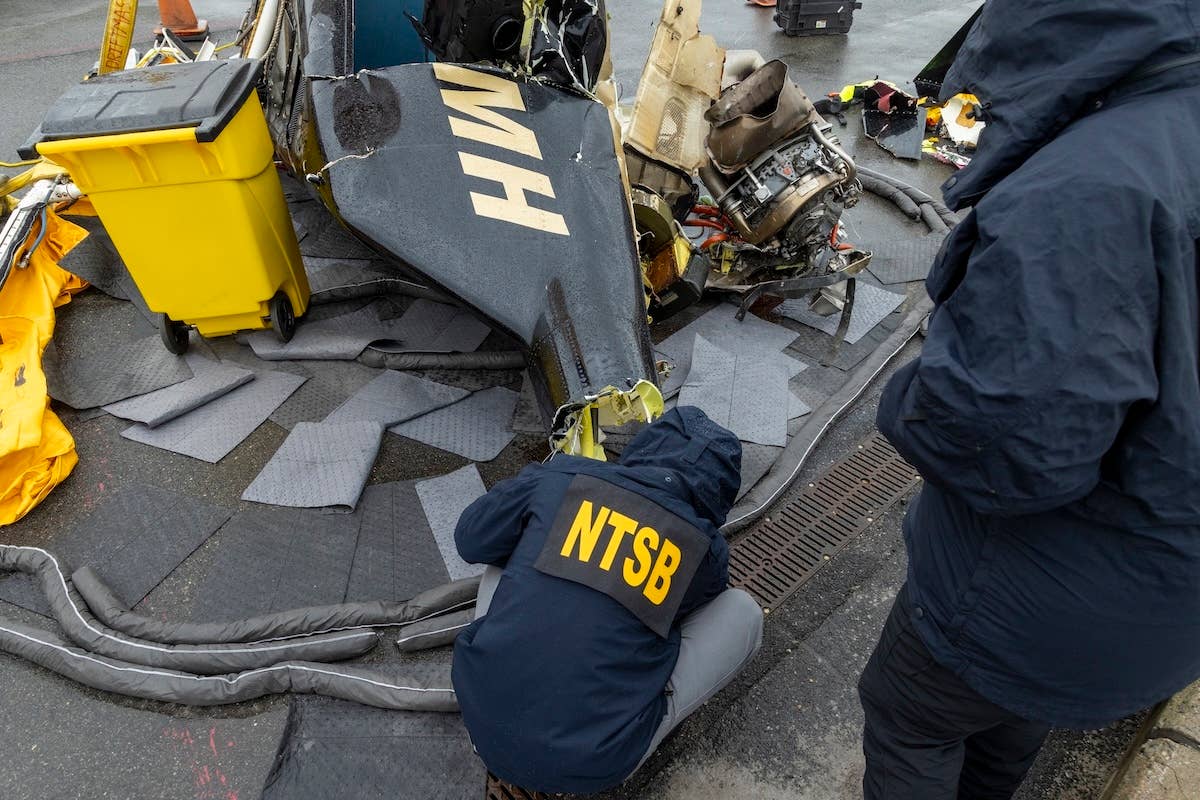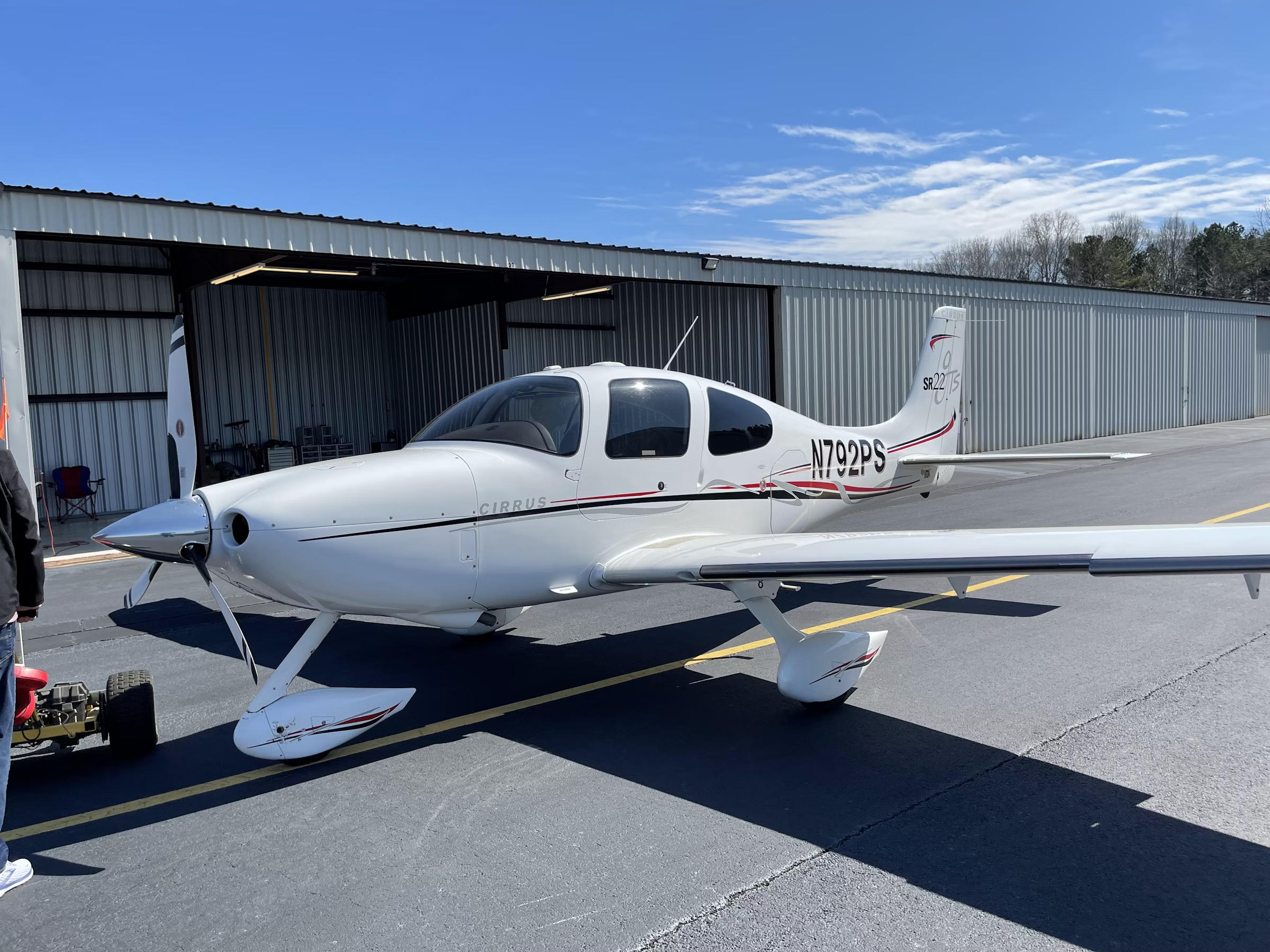Ultimate Issue: Staying Insured Encompasses Training, Loyalty, and Downsizing
Some guidance from those who approve the aircraft policies and pay the claims.

Before making a deal on any turbine aircraft, have a real talk with your insurance broker on the realities of getting the coverage you need, training requirements, and the ability to stay insured as you age. [Courtesy: Textron Aviation]
There are three key elements for surviving a hardened aircraft insurance market—training, loyalty, and downsizing.
It’s no secret that pilots of complex and high-end aircraft have been dealing with the trend of higher rates and even non renewed policies, especially older pilots and those with limited experience in type. But that doesn’t necessarily mean you have to sunset your flying career once you reach 70—the point in life where underwriters consider you a “senior” pilot. Moreover, with a savvy approach, some compromises and hard training requirements, insurance can be available for younger and green pilots stepping into tailwheels and turbines.
Plus, insurance pros unanimously say to find an insurer you’re happy with and stick with them for the long term because loyalty matters. At the same time, show the underwriter you’re doing everything possible in the name of safety, and that includes sourcing quality flight training and on a regular basis.
Here’s a general insurance guide, with tips and advice from those who write the policies and pay out the claims.
Old Plane, Older Pilot
Making matters worse is that companies are putting limits on insured value. Just because you have $350,000-plus invested in your refurbished piston single typically valued at $125,000 doesn’t always mean you’ll be able to insure it for its full upgraded value without solid proof it has all the upgrades. These days, with avionics, paint, and engine upgrades, it’s easy to get upside down from an insurance standpoint.
Marci Veronie from Avemco Aviation Insurance said the company writes policies based on what it calls “stated” proof of equipage.
“If you can prove to me you have it in what you want covered, and we can agree, that’s what we’ll write the policy for,” said Veronie, noting that clients send photos, videos, and equipment specs that are cross-checked against the company’s reference guides.
Essentially, do your best to prove what you think the aircraft is worth. If you sold the aircraft tomorrow, what would you get for it?
The other issue is maintainability. The parts availability issues for some older airplanes are trickling down to the insurance market, which means you’ll be paying more out of pocket for repairs.
In the insurance world this is called a component parts schedule, which means insurers will only pay out a percent of the loss of a flap or wing or tail section, as some examples. It’s a snag for uncommon experimentals and certified aging aircraft alike.
Scott Smith from Iowa-based Scott “Sky” Smith Insurance said that these days it’s not just the age of the pilot but the age of the aircraft that concerns insurers. Some companies have stopped insuring Cessna piston twins older than 30 years—a major chunk of the fleet. Others have walked away from turbine conversions.
There are a few underwriters who say claims can sit in limbo for many months because of parts shortages. For others, where it’s impossible to source parts, the aircraft becomes a loss, the insurer pays it out and unloads it to the highest salvage bidder. Part of the reason for rate increases is the increasing cost of replacement parts. Think about that before buying something rare, exotic, or classic.
It has taken a while for the underwriting world to sync up with the huge jump in value of used aircraft, though prices do seem to be stabilizing. Still, while an older Skyhawk might sell for big money, that doesn’t mean an insurer will write a policy with limits that match the value. Good insurers will routinely ask what improvements were made to the aircraft, including the big ones like avionics upgrades. Plan on providing proof of equipage (make sure all equipment is registered with the manufacturer) and keep tight engine logs.
Speaking of engine time, one FAA inspector advises that insurers deny claims if the aircraft’s engine is beyond TBO and the National Transportation Safety Board (NTSB) report cites engine failure as a probable cause of the crash. We call that nonsense. Engine TBO is not a requirement in Part 91 ops, but instead a suggestion from the manufacturer.
Who Is This Guy?
Part of the problem that’s frustrating for aging pilots is the stereotype. Not all senior pilots are hobbling around with a cane and short of breath, because in general, aviators tend to keep themselves in reasonably decent shape.
Insurance pros agree that for an underwriter sitting at a desk in Big City USA, it is difficult to evaluate an aging pilot’s risk. As one insurer put it: “How do you know if you are writing [for] the 60-year-old 80-year-old, or the 80-year-old 60-year-old?” The companies really don’t because people age at different rates. Some lag behind their chronological age, and some are way ahead of it. Some are fit enough to compete in endurance events, while others can’t walk a mile without falling over.
Some also argue that with age comes more sound aeronautical judgment, and for career aviators, lots of real-world experience. That may be true, but is it canceled out with declining situational awareness and reaction time? The low-hanging fruit is accident history. Almost every company did tell us that they experienced a slightly higher accident rate among the senior pilot customers. As a result, a 77-year-old pilot with two gear-up landings in the last three years, or who ran one tank dry and made an off-field landing with 40 gallons in the other tank, is probably not a good bet when it comes to risk.
Two areas of human thinking that researchers say suffer the most and the soonest from aging are working memory and reaction time. Working memory is defined in different ways, but we use it here to mean the part of transient memory used to temporarily store and manipulate information, such as reading back an approach clearance or running a checklist from memory. Underwriters have relied upon medical certification to give them some reassurance about the physical fitness of their clients and in some cases require additional FAA medical exams because it’s more data that they can put in the pilot’s files. The annual FAA medical including electrocardiogram (EKG) has been a favorite for years.
Another clue that underwriters look at is how much time a pilot has in the same type of airplane in which they are looking to be insured. Some aging pilots can easily tackle the challenge of a different airplane with lots of new features and complex systems, but many cannot. One underwriter said that while his company insures many older pilots, it tends to avoid older pilots who were making transitions, especially large ones—such as from a piston to a turbine. The required learning of new systems may be a challenge—and insurers know it.
What Scares Them?
Insurance underwriters consistently tell us that assessing the risk factor is easy simply because they have years of data, proving that pilots continue to bend aircraft the same way they always have, despite huge leaps in tech with layers of automated backstop.
We concur. Over at sister publication The Aviation Consumer magazine, we’ve been studying monthly NTSB accident reports for more than 50 years and come up with the same stats, again and again. Whether it’s runway loss of control (RLOC), continued VFR into IMC, loss of control in IMC, botched instrument approaches, low/reckless flying—the list is long—crash patterns are predictable, especially for taildraggers.
For prospective tailwheel owners and current owners 70 or older, the hard market means doing some homework before applying for insurance or renewing an existing policy.
Mike Pratt, an aviation insurance broker with Foundation Risk Partners, a large brokerage with offices in 14 states (he’s been a tailwheel owner and pilot for years) had some good advice. According to Pratt, a high number of claims because of careless prangs and the lack of pilot training are what is driving the insurance market for tailwheel airplanes above and beyond the hard market. There are only about a dozen insurance companies that write for aviation and not all will insure tailwheel airplanes, so it’s up to the owner to put their best foot forward when seeking insurance.
What are red flags to underwriters? In the tailwheel world, it’s little airplanes with very high hull values. That means that if you haven’t yet obtained a tailwheel endorsement, don’t buy a brand-new Husky, Scout, Maule, or XCub, to name a few, and expect to get insurance with one simple phone call. If you can get it at all, it could cost at least $15,000 for the first year.
Moreover, get time in the type of airplane you intend to buy—even if it’s only five hours—before you apply for insurance. Putting down a zero in the time type box in the insurance application means that some of the companies will not even look at you. Also, plan on completing as much dual instruction as the insurer requires in your new airplane before you fly it solo. It’s amazing that some owners don’t want to part with a couple thousand dollars for training after spending a couple hundred thousand for the airplane.
Pratt said he sees pilots become cheap about training way too often and believes it’s one of the most foolish things they can do. Truth is insurance companies have had their financial faces rubbed in the value of training for years. They know it keeps claims down. Plus, do you want to deal with having to repair your new bird when quality training might have avoided it altogether?
If you are 70 or older and have been able to get insurance for your tailwheel airplane, don’t rock the boat. Do not change insurers. Don’t get huffy in response to a big premium increase—the odds are that no one else will insure you, and the insurance company that has been loyal to you may drop you. We hear from senior pilots on a regular basis faced with nonrenewals, regardless of their claim histories. The bottom line with taildraggers is get an insurance quote before making a deal on one, while accepting that at some age, if you want insurance, you’ll have to switch to a nosewheel airplane.
Underwriters also look at what kind of airplane their older customer is flying and the amount of liability coverage they carry. Bear in mind that the insurer has in effect promised to pay for the airplane, and the limit of liability, if things go really badly—as it certainly sometimes does. Underwriters treat this as very real money. So, the older pilot in a Cessna 172 insured for $90,000 who carries $1 million of liability coverage limited to $100,000 per passenger causes an underwriter much less concern than the older pilot flying a Piper M600, as one example, worth $4 million and toting liability limits of $5 million.
Last, senior pilots flying retracts and twins seem to be attention-getting for many underwriters, even though the available evidence is confusing and even contradictory. Many of the studies based on accident analysis include only NTSB-reportable occurrences, which are only a fraction of all aircraft insurance claims. And how do we tell whether a gear-up landing is just an “oops’’ or was caused by age-related factors? Plenty of youngsters have committed the $60,000 slide, and plenty of younger pilots do some pretty stupid things.
Training, Currency, Medical Certification
This includes earning a new rating or two, which underwriters see as a good thing. So is the client who goes out for additional recurrent training on their own. Currency can be a good gauge for risk because the pilot who is flying 100 hours a year, getting periodic training and proficiency checks, plus maybe doing an FAA WINGS phase, should look good to an underwriter concerned about that aging pilot keeping his head in the game.
On the other hand, insurers have said that the mere issuance of a medical certificate does not provide the underwriter with much information about either gradual deterioration of a pilot’s skills, nor does it provide much ability to predict sudden medical incapacitation—as rare as it may actually be. So it’s easy to wonder how belt-and-suspender safety backstops (including Garmin’s Emergency Autoland and other autopilot-based equipment) will affect the insurance underwriting landscape. From what we can tell, it helps sell airplanes to aging pilots.
Avemco offers sizable discounts for pilots who go the extra mile in the knowledge- and skill-building department.
Seaplanes, Turbines, Experimentals
Unanimously, insurance pros admit that rates for these aircraft can be extremely high, and some might not be insurable at any cost. Avemco said it can help ease the pain if the floats are taken off and wheels installed during the offseason, if you operate in northern climates. Yes, skis are the same as wheels in the eyes of Avemco and most insurance companies, so they won’t alter the cost.
Got a fresh seaplane rating in your wallet? Resist going out and buying a high-performance model like a Cessna 206 or big-engine Maule on amphibs. Instead, consider something you can insure yourself for any physical damage. Maybe something pretty simple, such as a Luscombe or even a Cub on floats, until you get some time in your logbook.
Building an airplane from a kit? The advice is to stick with ones with large fleet sizes. Almost every underwriter recognizes models from Van’s, Sonex, and Zenith as being good choices. Replacement parts are a big concern for underwriters, and so is complexity, so it might be best to build a fixed-gear airplane (with a tricycle configuration) and avoid rare or one-off kits. Unless you have serious amounts of turbine time in your logbook, an experimental turbine will have your underwriter laughing.
Speaking of turbines, they’re certainly doable, but be realistic. As one underwriter put it, “the owner-flown jet and turboprop market is where all the hand-to-hand fighting is. Liability limits are being cut in half, premiums are doubling, and it’s sort of a failure of the insurance business to get this far behind the curve that we can’t provide the product at a reasonable price.” Another made a good point: “High-performance aircraft, including turbines, may be the big-buck business insurance companies want, but they may not want the pilot that goes along with the policy.”
Stepping into the world of an owner-flown turbine means you’ll need to spend quality time with your insurance broker to find out whether you can get a policy that covers you in the airplane and limits of liability that you need to protect yourself, as well as the conditions and its cost. Accept that your age and experience are the two drivers that determine your insurability when stepping up to turbine machines.
It may be that you will be unable to buy insurance to fly a dream airplane single pilot at any price. We’ll say it right here: If you are over 65, the current market means there’s little likelihood that you can get insurance for a first-time step-up to a turbine.
Wrapping It Up
Who knows when we’ll see another soft insurance market, but for now the best thing anyone—old or young—can do to stay insured for the long haul is simply don’t crash. That could mean piling on extra layers of training, being realistic with yourself on your skill set, and for aging pilots staring down age 70, accepting that downgrading to a simpler aircraft is the simplest way to keep flying. No matter what you fly, show your insurer that you’re serious about training and proficiency with a well-kept training log.
And simply prepare for the payout. By that we mean keeping all of the aircraft’s maintenance paperwork in order, including sign-offs for annual inspections and airworthiness directive (AD) compliance. While insurers will police it before writing a new policy, you don’t want to be scrambling to get the paperwork in order after an accident.
Last, if you’ve been a longtime customer to one company, keep it that way. Now is not the time for aging pilots to jump carriers, because in a hardened insurance market, loyalty matters.
This feature first appeared in the Summer 2024 Ultimate Issue print edition.

Sign-up for newsletters & special offers!
Get the latest FLYING stories & special offers delivered directly to your inbox






